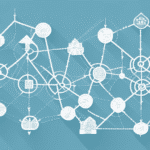Introduction to Delivery Notifications in E-Commerce Logistics
As e-commerce continues to expand, businesses are increasingly focused on optimizing their logistics processes to ensure orders are fulfilled efficiently and effectively. A critical component in achieving this is the implementation of delivery notifications. These notifications keep customers informed about their orders, streamline supply chain operations, and enhance the overall customer experience.
The Importance of Delivery Notifications in E-Commerce
Delivery notifications play a pivotal role in modern e-commerce by:
- Keeping customers informed about their order status
- Building trust and transparency
- Reducing customer service inquiries
- Optimizing supply chain efficiency
According to a Statista report, global e-commerce sales are projected to reach $6.54 trillion by 2023, underscoring the need for efficient logistics systems.
When customers receive accurate and real-time information about their deliveries, it helps build trust and creates a positive shopping experience. This not only leads to satisfied customers but also encourages repeat business and positive reviews, which can significantly grow your brand.
Moreover, delivery notifications can reduce the number of customer inquiries and complaints related to delivery status. By providing customers with regular updates, businesses can proactively address potential issues and prevent negative feedback. Additionally, delivery notifications improve the efficiency of logistics operations by offering valuable data on delivery times and routes, which can be used to optimize delivery processes and reduce costs.
Technological Advancements Enhancing Delivery Notifications
Real-Time Tracking Systems
Advancements in tracking technologies enable real-time monitoring of shipments, providing customers with precise information about their order's location and estimated delivery time. This transparency reduces uncertainty and improves customer satisfaction.
Artificial Intelligence and Machine Learning
AI and machine learning are revolutionizing delivery notifications by predicting delivery times more accurately, optimizing delivery routes, and personalizing communication with customers. These technologies allow businesses to respond dynamically to variables like traffic, weather, and order volumes.
Overcoming Challenges in Implementing Delivery Notifications
Ensuring Accurate Tracking Information
Accurate delivery notifications require seamless integration with logistics partners and reliable tracking systems. Investing in robust logistics software and maintaining regular system updates are essential for accuracy.
Managing Customer Expectations
Even with accurate estimates, delays can occur. Clear communication plans that inform customers about potential delays help manage expectations and maintain trust.
Delivering Notifications Effectively
Ensuring that notifications reach the right recipients at the right time is crucial. Implementing sophisticated notification systems that target the appropriate audience can enhance effectiveness and reduce missed communications.
Case Studies: Successful Delivery Notification Implementations
Amazon
Amazon’s robust delivery notification system provides real-time updates, fostering a transparent and reliable delivery process. This approach has significantly contributed to Amazon's high levels of customer trust and loyalty.
ASOS
The online fashion retailer ASOS offers comprehensive delivery notifications at every stage of the delivery process. This strategy reduces customer anxiety and increases satisfaction, leading to repeat business and positive reviews.
Best Practices for Implementing Delivery Notifications
- Invest in Reliable Logistics Software: Ensure your tracking systems are accurate and integrated with all logistics partners.
- Develop Clear Communication Protocols: Establish guidelines for informing customers about delays or changes in delivery status.
- Leverage Technology: Utilize GPS, AI, and machine learning to provide precise delivery estimates and personalized notifications.
- Provide Accessible Tracking Information: Make tracking details easily accessible through mobile apps and websites.
- Offer Multiple Delivery Options: Allow customers to choose delivery speeds and time slots that best suit their needs.
Future Trends in Delivery Notifications
- Drones and Autonomous Vehicles: Emerging technologies promise faster and more efficient deliveries.
- Personalized Delivery Experiences: Increased personalization in delivery methods and communication.
- Integration with Marketing: Using delivery notifications as channels for promotions and special offers.
- Enhanced Data Analytics: Advanced analytics for more precise delivery predictions and route optimizations.
Measuring the Impact of Delivery Notifications on Your E-Commerce Business
To gauge the effectiveness of delivery notifications, businesses should track key metrics, including:
- Customer Satisfaction: Measure through surveys and feedback forms.
- Repeat Business: Analyze repeat purchase rates to assess customer loyalty.
- Customer Reviews: Monitor reviews to understand customer perceptions and identify areas for improvement.
- Delivery Efficiency: Track delivery times and rates of on-time deliveries.
By analyzing these metrics, businesses can determine whether delivery notifications have positively impacted their operations and bottom line.
Conclusion
Delivery notifications are an indispensable component of e-commerce logistics, enhancing customer satisfaction, optimizing supply chain operations, and driving business growth. By implementing effective and advanced delivery notification systems, e-commerce businesses can build trust, reduce operational costs, and stay competitive in a rapidly evolving market.








